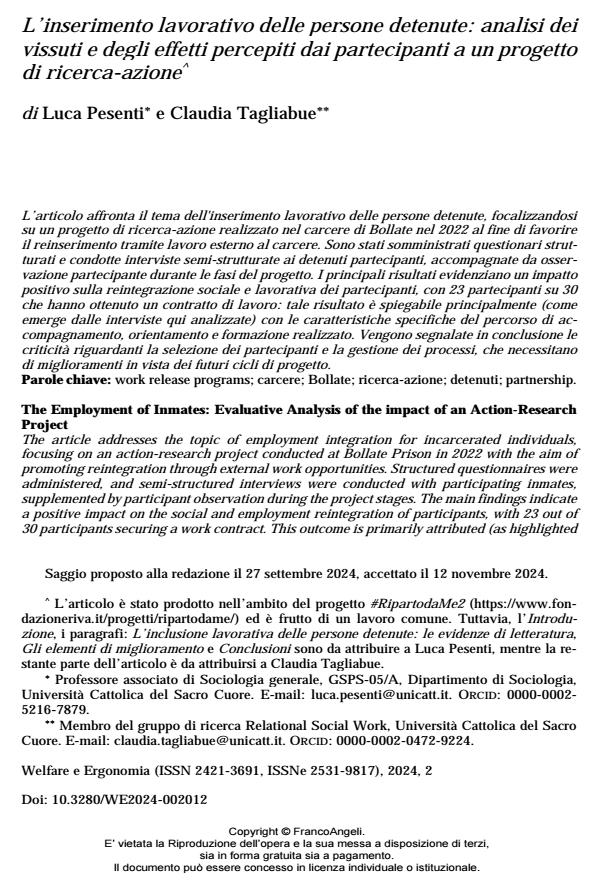The Employment of Inmates: Evaluative Analysis of the impact of an Action-Research Project
Journal title WELFARE E ERGONOMIA
Author/s Luca Pesenti, Claudia Tagliabue
Publishing Year 2025 Issue 2024/2
Language Italian Pages 14 P. 177-190 File size 68 KB
DOI 10.3280/WE2024-002012
DOI is like a bar code for intellectual property: to have more infomation
click here
Below, you can see the article first page
If you want to buy this article in PDF format, you can do it, following the instructions to buy download credits

FrancoAngeli is member of Publishers International Linking Association, Inc (PILA), a not-for-profit association which run the CrossRef service enabling links to and from online scholarly content.
The article addresses the topic of employment integration for incarcerated individuals, focusing on an action-research project conducted at Bollate Prison in 2022 with the aim of promoting reintegration through external work opportunities. Structured questionnaires were administered, and semi-structured interviews were conducted with participating inmates, supplemented by participant observation during the project stages. The main findings indicate a positive impact on the social and employment reintegration of participants, with 23 out of 30 participants securing a work contract. This outcome is primarily attributed (as highlighted in the interviews analyzed here) to the specific characteristics of the support, guidance, and training provided. Finally, the article highlights challenges regarding the selection of participants and management processes, which require improvements for future project cycles.
Keywords: work release programs; prison; Bollate; action-research; inmates; partnership.
Luca Pesenti, Claudia Tagliabue, L’inserimento lavorativo delle persone detenute: analisi dei vissuti e degli effetti percepiti dai partecipanti a un progetto di ricerca-azione in "WELFARE E ERGONOMIA" 2/2024, pp 177-190, DOI: 10.3280/WE2024-002012